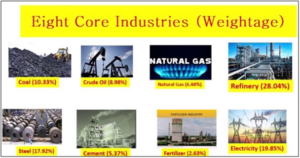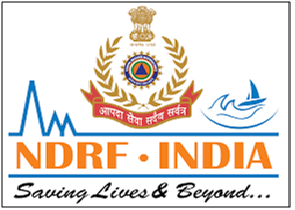Archives
(PRELIMS Focus)
Category: Economy
Context:
- Growth in the Index of Industrial Production (IIP), released by the Ministry of Statistics and Programme Implementation, stood at 3.2% in September last year. However, growth had since accelerated to 4.3% by July 2025, following which it slowed again.

About Index of Industrial Production (IIP):
- Nature: The Index of Industrial Production (IIP) is a key statistical tool used to measure the short-term changes in the volume of production in Indian industries.
- Objective: It provides insight into the growth or contraction of industrial activity over a given period, making it a crucial economic performance indicator.
- Nodal ministry: The IIP is published by the Central Statistics Office (CSO), which is part of the Ministry of Statistics and Programme Implementation (MoSPI).
- Base year: The current base year for the index is 2011–12. This base year was adopted to reflect modern industrial structure and production patterns, following periodic revisions from earlier base years such as 1937, 1946, 1951, 1956, and so on.
- Sectoral Composition of IIP (Weight-wise):
- Manufacturing: 77.63% of total weight (809 items)
- Mining: 14.37% (29 items)
- Electricity: 7.99% (1 item)
- Composite indicator: It is a composite indicator that measures the growth rate of industry groups classified under:
- Broad sectors, namely, Mining, Manufacturing, and Electricity.
- Use-based sectors, namely Basic Goods, Capital Goods, and Intermediate Goods.
- Eight Core Sectors:
- These comprise 40.27% of the weight of items included in the Index of Industrial Production (IIP).
- The eight core sector industries in decreasing order of their weightage: Refinery Products, Electricity, Steel, Coal, Crude Oil, Natural Gas, Cement, Fertilizers.
Source:
Category: Polity and Governance
Context:
- Ahead of Cyclone Montha’s landfall on Tuesday night, the National Disaster Response Force deployed 25 teams across Andhra Pradesh, Chhattisgarh, Odisha, Puducherry, and Tamil Nadu, while another 20 teams were on standby.

About National Disaster Response Force (NDRF):
- Establishment: NDRF was established under section 44 of the Disaster Management Act, 2005.
- Role: It is a multi-skilled and highly specialist force capable of dealing with all types of natural and man-made disasters like Floods, Cyclone, Earthquakes, Landslides, Building-collapse, Trains and road accidents etc.
- Objective: It is aimed at specialized response to natural and man-made disasters.
- Nodal ministry: It functions under the purview of the Ministry of Home Affairs (MHA) and is headed by a Director General.
- Expansion: Initially established in 2006 with 8 Battalions, the NDRF has now expanded to 16 Battalions, drawn from the CAPF, viz Border Security Force, Central Reserve Police Force, Central Industrial Security Force, Indo-Tibetan Border Police, Sashastra Seema Bal and Assam Rifles.
- Importance: The strategic deployment of NDRF resources, characterized by “proactive availability” and “pre-positioning” during imminent disaster situations, has proven instrumental in mitigating damages caused by natural calamities across the country. It has also been very active in responding to natural disaster under multi-lateral and bi-lateral agreement at international level.
- Notable works: The NDRF teams responded during triple disaster (Earthquake, Tsunami and Radiation Leakage) of Fukushima, Japan in 2011 and during Earthquake in Nepal in 2015.
Source:
Category: Government Schemes
Context:
- Union Electronics and IT Minister announced the approval of first trench of 7 projects under the Electronics Components Manufacturing Scheme (ECMS).
About Electronics Components Manufacturing Scheme (ECMS):
- Launch: The ECMS, was launched in April 2025 as a complement to the India Semiconductor Mission.
- Objective: It seeks to strengthen India’s electronics value chain beyond finished goods and chip fabrication by boosting Domestic Value Addition (DVA) and linking Indian firms with Global Value Chains (GVCs).
- Major sectors: ECMS supports horizontal linkages with automobile, power, and industrial sectors.
- Uniqueness: It is the first dedicated Production-Linked Incentive (PLI) scheme focused specifically on boosting electronics components manufacturing.
- Tenure: The scheme has a tenure of 6 years (1 year of gestation period) i.e. from FY2025-26 to FY2031-32.
- Incentive Structure: The ECMS provides turnover-linked, capex-linked, or hybrid fiscal incentives, with a portion of both turnover and capex incentives linked to employment generation. Incentives will be given on a first-come, first-served basis to firms ready for early production.
- Importance: Electronics is India’s third-largest export, with the country being the 2nd-largest mobile manufacturer globally. The ECMS, along with Production Linked Incentive (PLI) and semiconductor initiatives, is crucial for establishing a USD 500 billion electronics manufacturing ecosystem by 2030-31.
Source:
Category: History and Culture
Context:
- According to the former Director of the Central Institute of Languages (CIIL), India has lost over 220 languages in the last 50 years. In recent years, growing concern has emerged over the gradual decline of the Dogri language in the Jammu region.

About Dogri Language:
- Origin: It is an Indo-Aryan language (language of the Vedas and Laukik Sanskrit), part of the larger Indo-European family of languages.
- Earliest reference: The earliest written reference to Dogri (using the paleonym Duggar) is found in the Nuh sipihr (“The Nine Heavens”), written by the poet Amir Khosrow in 1317 CE.
- Evolution over time: Like other modern Indo-Aryan languages, Dogri has also passed through Old Indo-Aryan (Sanskrit) and Middle Indo-Aryan (Pali, Prakrit, and Apabhramsha) stages of development and entered the modern Indo-Aryan stage around the 10th century A.D. Hence, it shows its three-fold process of development of its sound structure, expressing its affinity with Shaurseni Prakrit.
- Script: Once the official script of the Dogra princely state under Maharaja Ranbir Singh (1857–85 CE), it was written in Dogra Akkhar but later replaced by Devanagari script in the 20th century.
- Current relevance: It is one of the 22 scheduled languages under the Eighth Schedule of the Indian Constitution and an official language of J&K since 2020. It was added to the Eighth Schedule of the Indian Constitution through the 92nd Constitutional Amendment Act of 2003.
- Major features: Dogri uses 10 vowels and 28 consonants with tonal variations (level, falling, rising). It displays nasalization, metathesis, and tone-based sound differentiation. It also incorporates borrowings from Persian and English while retaining Sanskritic roots.
- Prevalent in northern states: It is spoken in India, chiefly in the Jammu region of Jammu and Kashmir. It is also spoken in the state of Himachal Pradesh and in northern Punjab, other parts of Jammu and Kashmir, and elsewhere.
Source:
Category: Geography
Context:
- The Union Cabinet decided to provide ₹37,952 crore as fertilizer subsidy for the ongoing rabi crop of this winter season. The subsidy on phosphorous (P) and sulphur (S) fertilizers was increased by ₹736 crore, while the subsidy for nitrogen (N) and potash (K) will remain the same as the kharif (summer) crops.

About Fertilisers in India:
- Definition: Fertilisers are substances that are applied to soil or plants to supply essential nutrients required for optimal growth and development. These nutrients, such as nitrogen, phosphorus, and potassium, are crucial for plants to carry out various metabolic processes, including photosynthesis, protein synthesis, and cell division.
- Importance: Fertiliser use is widespread in agriculture, horticulture, and gardening to enhance crop yields and improve plant health. Agriculture and allied sectors contribute nearly 16% to GDP and support over 46% of India’s population. Thus, fertilisers play important role and act as foundational pillar for economic livelihood indirectly.
- Trends in production: India is the second-largest user and third-largest producer of fertilizers globally. The total Fertilizer production has increased from 385.39 Lakh Metric Tonnes (LMT) in 2014–15 to 503.35 LMT in 2023–24. In 2023–24, fertilizer production was led by the private sector (57.77%), followed by cooperatives (24.81%) and the public sector (17.43%).
- Trends in consumption: Fertiliser consumption has increased from less than 1 million tonnes of total nutrients in the mid-1960s to almost 17 million tonnes in recent times. The introduction of high-yielding varieties in the 1960s boosted Fertiliser use.
- Import Dependency: In 2023–24, India consumed 601 LMT of fertilizers, producing 503 LMT domestically and importing 177 LMT. Self-sufficiency reached 87% for urea, 90% for NPK (nitrogen, phosphorus, and potassium), but only 40% for DAP (Di-Ammonium Phosphate), while Muriate of Potash (MOP) remains 100% imported.
About One Nation One Fertiliser Scheme (ONOF):
- Feature: Under ONOF companies are allowed to display their name, brand, logo and other relevant product information only on one-third space of their bags. On the remaining two-thirds space, the “Bharat” brand and Pradhanmantri Bharatiya Jan Urvarak Pariyojana logo will have to be shown.
- Single brand name: The single brand name for UREA, Di-Ammonium Phosphate, Muriate of potash (MOP) and Nitrogen Phosphorus Potassium NPK etc. would be BHARAT UREA, BHARAT DAP, BHARAT MOP and BHARAT NPK etc. respectively for all Fertiliser Companies, State Trading Entities and Fertiliser Marketing Entities (FMEs).
- Coverage: This scheme applies to both public & private sector companies.
- Importance: It will bring about uniformity in fertiliser brands across the country. It will also prevent the criss-cross movement of fertilisers and reduce high freight subsidies.
Source:
(MAINS Focus)
(GS Paper III: Disaster Management; Environment and Climate Change)
Context (Introduction)
India’s east coast—especially along the Bay of Bengal—regularly endures intense cyclones in October–November that cause widespread devastation. While preparedness has improved, relief and rehabilitation of vulnerable people, livelihoods and infrastructure remain major challenges.
Main arguments
- Historical vulnerability of east coast – Of the 12 major cyclones between the 18th and 20th centuries, nine struck in October–November, including the 1977 Andhra cyclone (landfall 19 Nov) and the 1999 Odisha super-cyclone (landfall 29 Oct). Both caused approximately 10,000 deaths each.
- Improved preparedness, yet residual damage persists – The last 20 years have seen far fewer mass-casualty events, thanks to better forecasting, evacuation and early-warning systems. Nevertheless, property loss, disruption of livelihoods (especially among the under-privileged), and losses of milch and draught animals and poultry continue.
- Structural & non-structural mitigation efforts – Coastal States (e.g., Odisha, Andhra Pradesh, Tamil Nadu) are investing in cyclone shelters, evacuation plans, early-warning dissemination, evacuation of livestock, strengthening of public infrastructure and mapping of hazard-prone zones.
- Need for equity and responsive rehabilitation – Political leadership must ensure that relief reaches all affected impartially, especially marginalised communities whose livelihoods are disrupted (fishing, agriculture, livestock). Rehabilitation must restore more than just built infrastructure—livelihoods, animal assets and social capital must be regenerated.
- Climate-change intensification and future risk – Warming ocean temperatures are increasing the risk of more intense cyclones and possibly shifting or expanding the zones of impact. This elevates the burden on relief and rehabilitation frameworks.
Criticisms / Drawbacks
- Despite better forecasting, damage to private assets and livelihoods remains high because relief frameworks often emphasise life-saving but weaker on livelihood restoration (for example draught animals, poultry).
- Rehabilitation often focuses on reconstruction of houses and public infrastructure, but less on rebuilding the asset base of the poor (livestock, boats, tools), or psychological/social recovery.
- Equity issues: relief and rehabilitation sometimes favour visible public infrastructure rather than less visible but socially critical assets (e.g., small-holder poultry, informal fisheries).
- Institutional inertia: though the systems have been greatly improved, in many cases coordination among agencies, timely fund disbursal, and community-level participation remain weak.
- Future risk under-estimated: Given climate change, the intensity or track of cyclones may vary; some states may not have fully adapted to new risk profiles.
Reforms / Best Practices
- Strengthen and proliferate multi-purpose cyclone shelters that double as schools/community centres, thereby justifying investment and ensuring maintenance. For instance, the Odisha government has sought central support (~₹9,500 crore) to build ~800 new shelters and underground cabling in cyclone-prone areas.
- Implement livelihoods-centred rehabilitation: restore and replace goats/poultry, provide fodder and veterinary support for draught/milch animals, guarantee boat-engine and net replacement for fishing communities.
- Enhance post-disaster rapid asset-damage assessment (including animals, boats, infrastructure) using tools like UAVs for remote or difficult-terrain zones. Research indicates UAVs can expedite damage assessment and resource allocation.
- Strengthen community-based disaster risk reduction (CBDRR): train local volunteers, conduct mock drills, maintain evacuation-ready lists of vulnerable persons (elderly, pregnant women, disabled), and integrate local knowledge (traditional warning signs; community shelters).
- Institutionalise equitable relief fund access and social inclusion: ensure marginalised groups (scheduled tribes, fishermen, landless labour) are proactively listed for relief; adopt transparent criteria and community monitoring.
- Integrate climate-change adaptation into cyclone planning: update hazard mapping with future-scenario modelling, raise design standards for shelters/infrastructure (higher wind/surge thresholds), and invest in nature-based coastal buffers (mangroves, dunes) to reduce storm surge impact.
- Accelerate pre-positioning of resources and rapid restoration infrastructure: stockpile tarpaulins, food, water, medicines and fuel; pre-deploy heavy equipment (JCBs, chain saws) for immediate clearing; plan power-network resilience (e.g., underground cabling).
- Improve institutional coordination and governance: regular drills involving municipal, district, state and central agencies; real-time governance centres for monitoring; strong accountability mechanisms for relief-rehabilitation.
Conclusion
While India’s east-coast cyclone belt has made impressive strides in reducing mortality through early warning, evacuation and institutional readiness, the true test lies in resilient and inclusive rehabilitation that rebuilds livelihoods and community assets.
- As climate-induced cyclone intensity rises, the shift must go from response to transformational recovery—one that empowers the most vulnerable, rebuilds ecological buffers and embeds adaptive planning.
- Only then can we convert the progress made into sustainable resilience across coast-facing communities.
Mains Question
- Given the recurrent cyclone threat along India’s east coast, critically analyse the relief and rehabilitation challenges and propose measures to build resilient livelihoods for vulnerable communities.(250 words, 15 marks)
Source: The Hindu
(GS Paper III: Urban Development, Infrastructure, and Environment)
Context (Introduction)
India’s Viksit Bharat @2047 vision of a $30-trillion economy hinges on cities that are productive, resilient, and sustainable. However, urban planning in India largely remains limited to land-use zoning, neglecting economic potential, environmental sustainability, and inclusive urban governance.
Main Arguments
- Economic Vision as the Foundation of Planning: Urban planning must begin with an economic growth strategy, identifying future employment sectors, industrial corridors, and skill clusters.
- The UN-Habitat’s New Urban Agenda advocates aligning spatial plans with economic priorities to transform cities into growth engines. For instance, Ahmedabad’s Town Planning Schemes link land readjustment to infrastructure-driven industrial expansion, demonstrating this integration in practice.
- Integrated Systems Planning: Cities function as interlinked systems — housing, mobility, energy, waste, and water.
- Planning must, therefore, move beyond static zoning to systems-based urban design, aligning with SDG 11: Sustainable Cities and Communities. Integrated land, water, and energy plans can prevent resource stress and improve resilience to shocks such as floods or droughts.
- Natural Resource and Climate Budgeting: Urban growth must be guided by resource budgeting—evaluating available water, green cover, and waste-handling capacity.
- The Second Administrative Reforms Commission (2nd ARC) and the National Mission on Sustainable Habitat recommend integrating disaster resilience and climate adaptation into every urban plan, ensuring no city expands beyond its ecological carrying capacity.
- Environmental and Mobility Integration: Cities contribute about 70% of India’s carbon emissions and face severe air quality crises. Each city plan must include an Air Pollution Management and Mobility Plan, promoting mass transport, non-motorised modes, and electrification.
- The Delhi Metro is an effective model—integrating land-use, transport, and emission reduction, helping avoid nearly 4.8 million tonnes of CO₂ annually (CSE, 2024).
- Regional and Polycentric Urbanisation: Urbanisation now extends to peri-urban belts and smaller towns. UN-Habitat and India’s National Urban Policy Framework (NUPF) emphasise polycentric growth—developing multiple city clusters instead of one mega-city focus.
- The Delhi–Meerut–Ghaziabad corridor under the Regional Rapid Transit System (RRTS) exemplifies such a regional planning model connecting jobs, transport, and housing across jurisdictions.
Criticisms and Drawbacks
- Outdated legal framework: Urban planning acts still rely on 20th-century zoning logic, unsuited to fast urbanisation.
- Weak coordination: Multiplicity of agencies leads to fragmented planning, violating the “one city–one plan” principle.
- Neglect of informality: Over 80% of India’s urban workers are informal, yet livelihood zones remain unplanned.
- Limited environmental integration: Air, water, and waste management are peripheral rather than integral planning goals.
- Boundary constraints: Planning stops at municipal limits, excluding fast-growing peri-urban regions.
Reforms and Policy Directions
- Legislative Modernisation: Revise the Town and Country Planning Acts to include economic, environmental, and social parameters, adopting performance-based planning instead of rigid zoning.
- Economic and Resource-linked Planning: Make City Economic Strategies mandatory precursors to Master Plans—linking job forecasts, GDP potential, and carrying-capacity assessments.
- Integrated Metropolitan Governance: Create unified Metropolitan Planning Authorities with fiscal autonomy and accountability, as suggested by the 2nd ARC, to ensure cohesive planning across agencies.
- Climate and Environmental Accountability: Institutionalise City Climate Action Plans, Carbon Budgets, and Air Quality Cells to operationalise India’s net-zero 2070 roadmap and meet Paris Agreement commitments.
- Data, Education, and Local Capacity: Modernise urban education through GIS-enabled, sustainability-focused curricula. Planners must be trained in digital mapping, environmental auditing, and participatory planning, as encouraged by UN-Habitat’s Capacity Development Framework.
| Model Example: Surat City Resilience Model
Surat, once prone to floods and epidemics, is now cited globally (by UN-Habitat) as a Resilient City Model. Through Surat Urban Development Authority (SUDA) and the 100 Resilient Cities initiative, the city integrated flood forecasting, solid waste management, and early warning systems into its planning. This demonstrates how multi-sectoral, adaptive planning can convert vulnerability into resilience — a template for other Indian cities. |
Conclusion
India’s urban future must transcend land-use rigidity and embrace strategic, data-driven, and climate-conscious urbanism. By linking planning to economic growth, sustainability metrics, and resilient governance, India can build cities that power inclusive development while meeting its climate and social justice obligations — truly realising the vision of Viksit Bharat 2047.
Mains Question
- Urban planning in India is overly focused on land-use regulation and ignores its economic and ecological dimensions. Discuss with examples how Indian cities can adopt integrated and resilience-based planning models to achieve sustainable urban growth. (250 words, 15 marks)
Source: The Indian Express
